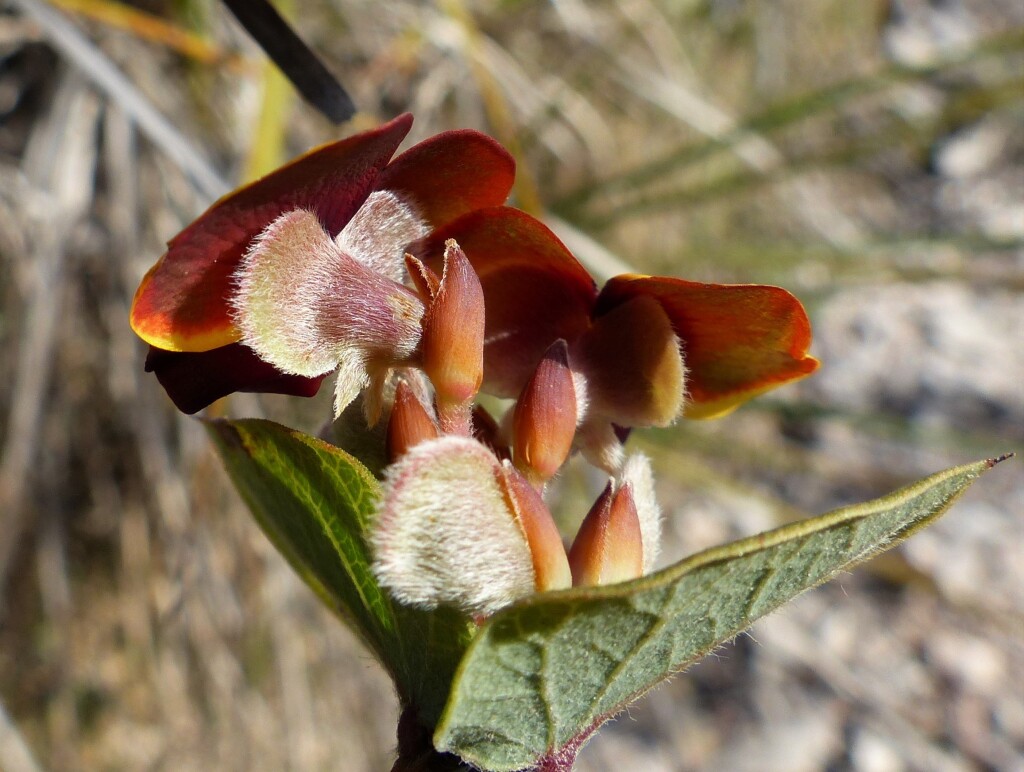Platylobium
Shrubs or subshrubs, sometimes prostrate or semi-scandent; branches slender, terete, unarmed. Leaves usually opposite, simple or unifoliolate, often lobed or angled; stipules persistent, longitudinally striate. Flowers 1–4 per axil, subsessile to distinctly pedicellate, subtended by a series of distichous brown papery scales and bracts; bracteoles paired, at or near apex of pedicel, similar to the scales but often larger; calyx with the 2 upper lobes greatly enlarged, broadly rounded, usually united for less than half their length, persisting in fruit; staminal sheath split open on one side, anthers uniform, dorsifixed, with a broad connective. Pods oblong, flat, with a conspicuous thin wing 2–5 mm wide beyond the upper sutural nerve, several-seeded; valves thin, elastically revolute, revealing a glossy inner surface; seeds ovate-ellipsoid or ellipsoid, the small hilum covered by a hooded cap-like aril.
Endemic eastern Australian genus of 9 species.
Ross, J.H. (1996). Platylobium. In: Walsh, N.G.; Entwisle, T.J., Flora of Victoria Vol. 3, Dicotyledons Winteraceae to Myrtaceae, pp. 816–819. Inkata Press, Melbourne.
 Spinning
SpinningThompson, I.R. (2011). A revision of Platylobium (Fabaceae: Bossiaeeae). Muelleria 29: 154–172.

